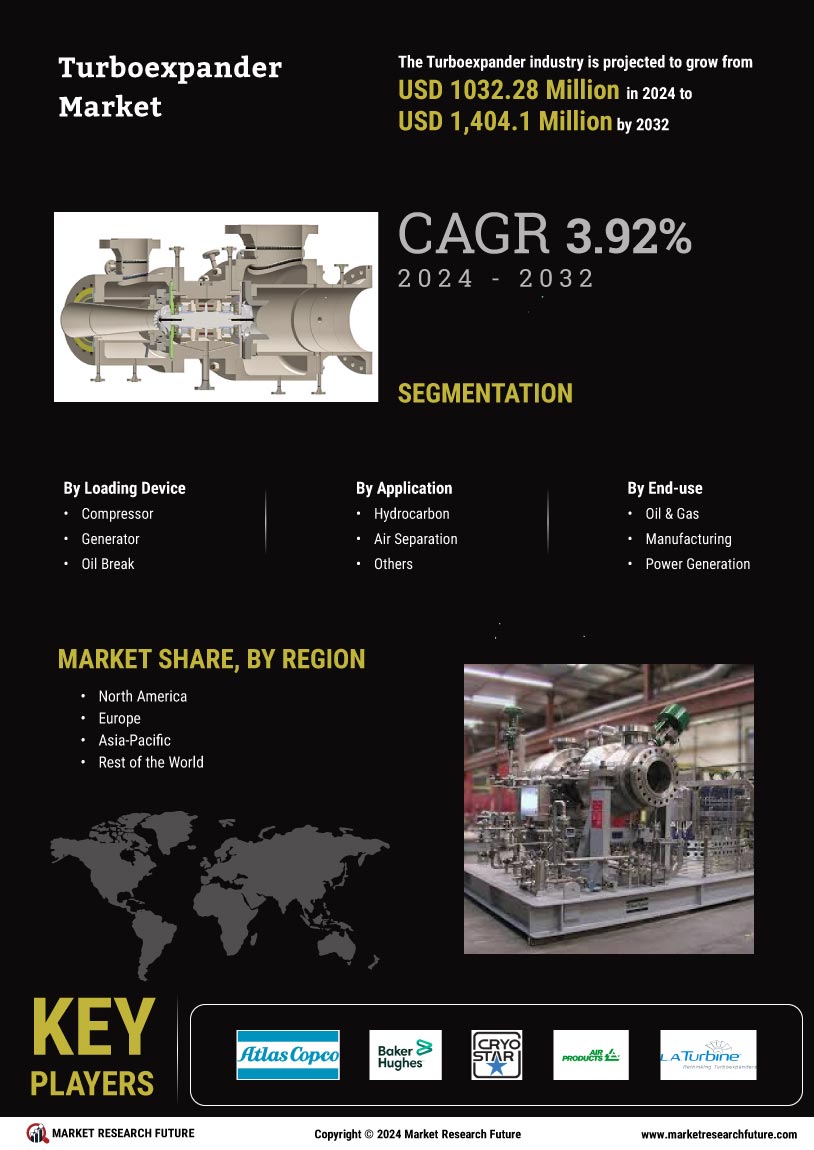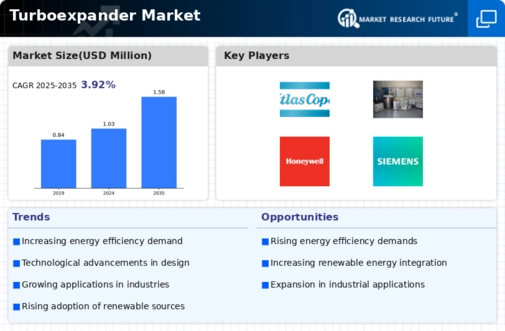Market Growth Projections
The Global Turboexpander Market Industry is projected to exhibit robust growth over the coming years. With an anticipated market size of 1.03 USD Billion in 2024, the industry is expected to expand to 1.58 USD Billion by 2035. This growth trajectory suggests a compound annual growth rate (CAGR) of 3.92% from 2025 to 2035. Such projections indicate a strong demand for turboexpanders driven by various factors, including energy efficiency, technological advancements, and regulatory support. The market's expansion reflects the increasing recognition of turboexpanders as vital components in optimizing energy use across diverse industrial applications.
Growing Demand for Energy Efficiency
The Global Turboexpander Market Industry is experiencing a surge in demand for energy-efficient solutions across various sectors. Industries such as oil and gas, chemical processing, and power generation are increasingly adopting turboexpanders to optimize energy use and reduce operational costs. For instance, turboexpanders can recover energy from high-pressure gas streams, converting it into usable power. This trend is projected to contribute to the market's growth, with the industry expected to reach 1.03 USD Billion in 2024. The emphasis on sustainability and reducing carbon footprints further drives this demand, as companies seek to enhance their energy efficiency.
Rising Adoption in Renewable Energy Sector
The Global Turboexpander Market Industry is witnessing increased adoption within the renewable energy sector, particularly in applications such as geothermal energy and biogas recovery. Turboexpanders play a crucial role in converting thermal energy into mechanical energy, thereby enhancing the efficiency of energy conversion processes. For instance, in geothermal plants, turboexpanders can extract energy from steam, improving overall plant efficiency. This trend aligns with global efforts to transition towards cleaner energy sources, thereby driving market growth. The integration of turboexpanders in renewable energy systems is likely to bolster the industry's expansion, contributing to a more sustainable energy landscape.
Increasing Industrialization and Urbanization
The Global Turboexpander Market Industry is benefiting from the ongoing trends of industrialization and urbanization across emerging economies. As countries develop their industrial bases, the demand for energy-efficient technologies, including turboexpanders, is likely to rise. Industries such as manufacturing, petrochemicals, and power generation are expanding, necessitating efficient energy solutions to meet growing energy demands. This industrial growth is expected to drive the market size upward, with turboexpanders being integral to optimizing energy use in these sectors. The combination of industrial expansion and urban growth presents a substantial opportunity for turboexpander manufacturers.
Technological Advancements in Turboexpander Design
Innovations in turboexpander technology are significantly influencing the Global Turboexpander Market Industry. Recent advancements include the development of more efficient turbine designs and materials that withstand extreme conditions. These improvements enhance performance and reliability, making turboexpanders more appealing to industries requiring high-performance solutions. For example, the integration of advanced computational fluid dynamics in the design process allows for better optimization of flow characteristics. As these technologies evolve, they are likely to expand the application range of turboexpanders, potentially increasing the market size to 1.58 USD Billion by 2035, with a projected CAGR of 3.92% from 2025 to 2035.
Regulatory Support for Energy Efficiency Initiatives
Government regulations and policies aimed at promoting energy efficiency are significantly impacting the Global Turboexpander Market Industry. Many countries are implementing stringent energy efficiency standards and incentives for industries to adopt advanced technologies. For example, regulatory frameworks in regions such as Europe and North America encourage the use of turboexpanders as part of broader energy management strategies. This regulatory support not only facilitates market entry for turboexpander manufacturers but also stimulates demand from end-users seeking compliance with energy efficiency mandates. As a result, the market is poised for growth, driven by favorable policy environments.





